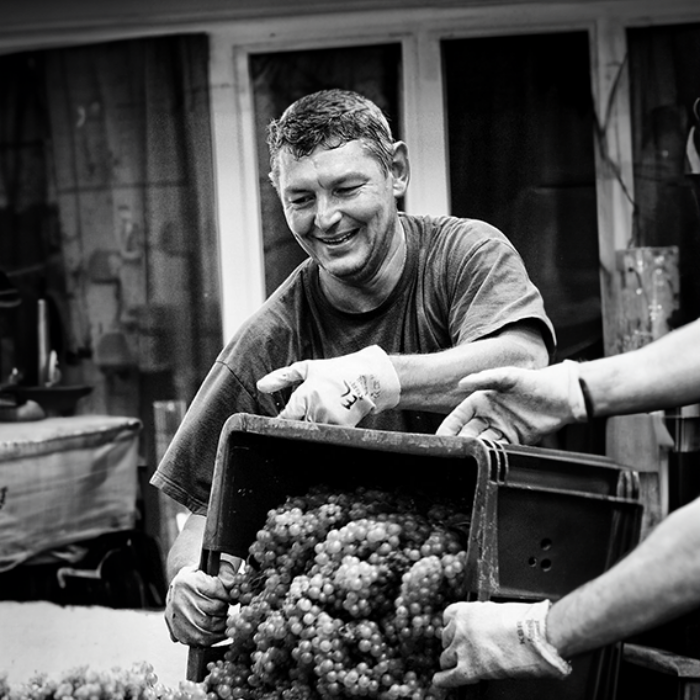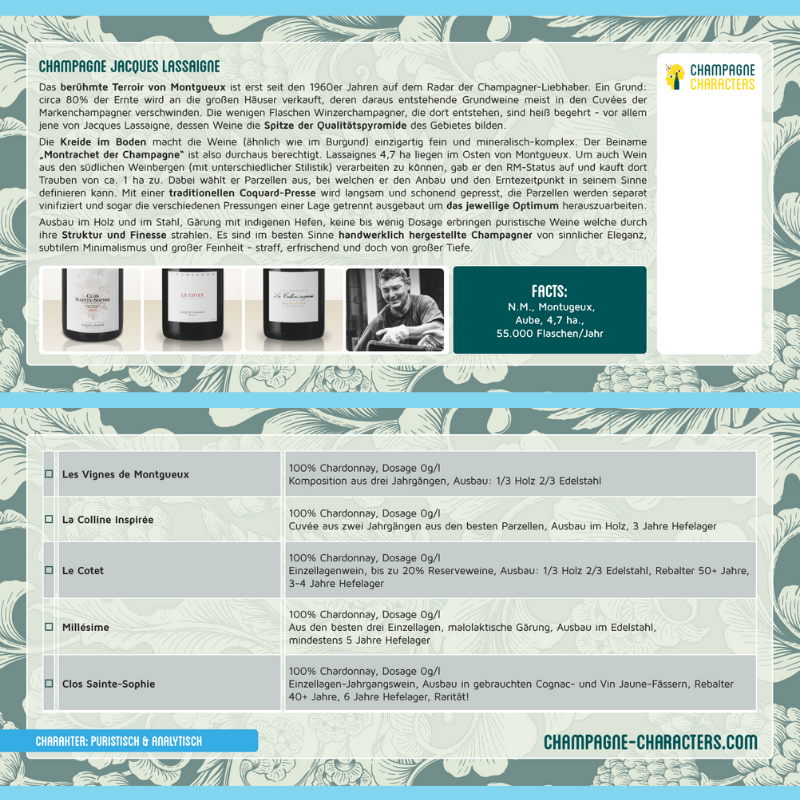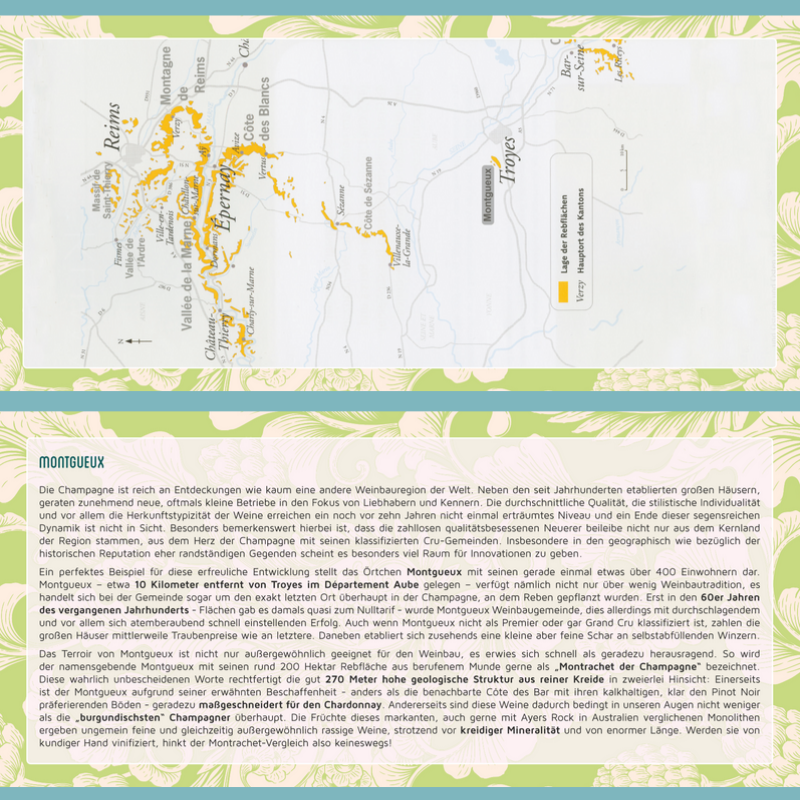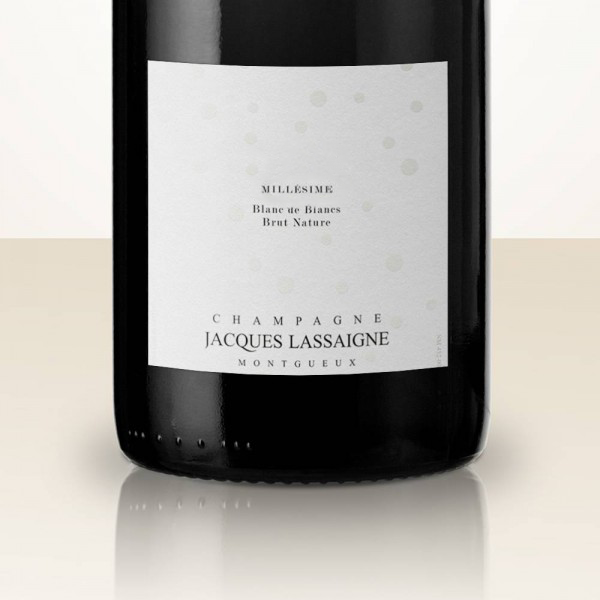
Digitale Winzerkarte
Das heute sehr ver- und begehrte Terroir Montgueux ist so wirklich erst seit den sechziger Jahren des 20.Jahrhunderts auf dem Schirm der Champagnergenießer. Ein Grund: circa 80% des Ertrages der Lagen wird nach wie vor an die großen Häuser verkauft, deren daraus entstehende Grundweine meist in den Cuvées der Markenchampagner verschwinden.
Daher sind die wenigen Flaschen Winzerchampagner, die dort entstehen, heiß begehrt - vor allem jene von Jacques Lassaigne, dessen Weine unangefochten an der Spitze der Qualitätspyramide des Gebietes stehen.
Kreide dominiert hier den Boden und macht die Weine (ähnlich wie im Burgund) so einzigartig fein, markant und mineralisch-komplex, dass sich das Gebiet bei Kennern den Beinamen "Montrachet der Champagne" verdient hat.
Lassaigne’s 4,7 ha liegen im Osten von Montgueux. Um auch Trauben von den südlicheren Weinbergen verarbeiten und den daraus etwas unterschiedlichen Stil darstellen zu können, gab er den Status des Recoltant Manipulant auf und kauft jedes Jahr Trauben von 1 ha zu. Dabei wählt er gezielt Parzellen und Winzer aus, bei welchen er die Anbaumethoden und den Erntezeitpunkt in seinem Sinne definieren kann.
Alle Trauben werden dann im eigenen Weingut in einer traditionellen Coquard Presse langsam und schonend gepresst.
Die Parzellen werden sodann im Keller separat vinifiziert und sogar die verschiedenen Pressungen einer Lage werden getrennt ausgebaut um das jeweilige Optimum herauszuarbeiten.
Der Großteil wird in Stahltank ausgebaut, selten kommt gebrauchtes Holz zum Einsatz. Im Keller kommen hauptsächlich weingutseigene Hefen zum Einsatz, es wird nur wenig geschönt und nicht filtriert. Auch der Einsatz von Schwefel zur Stabilisation wird auf das nur unbedingt notwendige reduziert.
Dosage wird, wenn überhaupt, nur minimal angewandt und so entstehen hier puristische Weine welche durch ihre Struktur und Finesse zu strahlen wissen.
Es sind im besten Sinne handwerklich hergestellte Champagner von sinnlicher Eleganz, subtilem Minimalismus und großer Feinheit - straff, erfrischend und doch von großer Komplexität.
Facts: N.M., Montgeux, Aube, 4,7 ha., 55.000 Flaschen/Jahr




